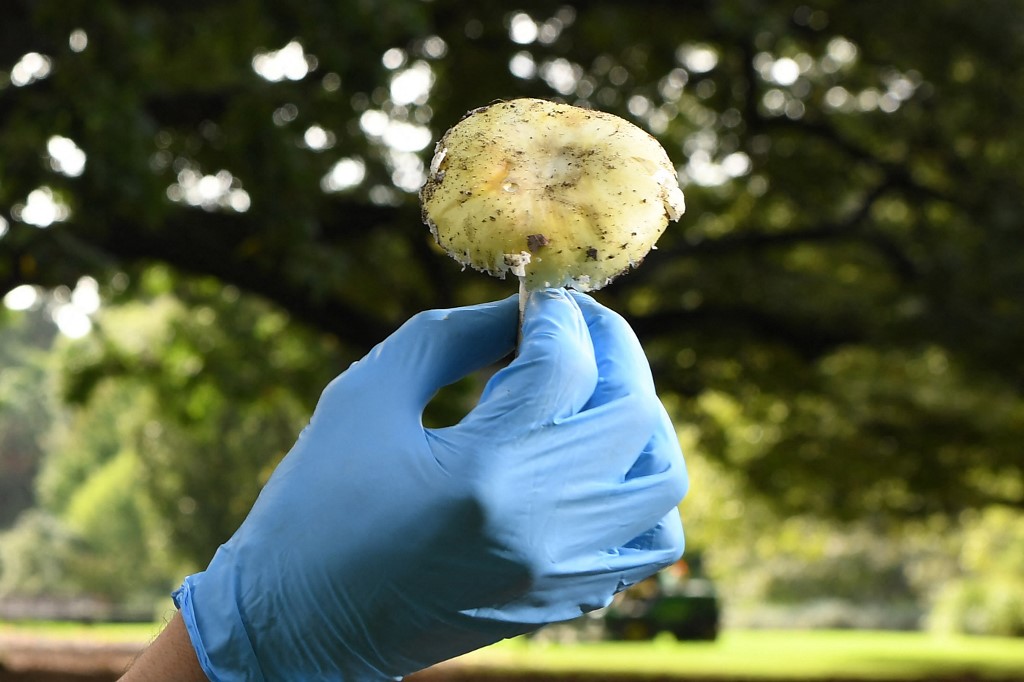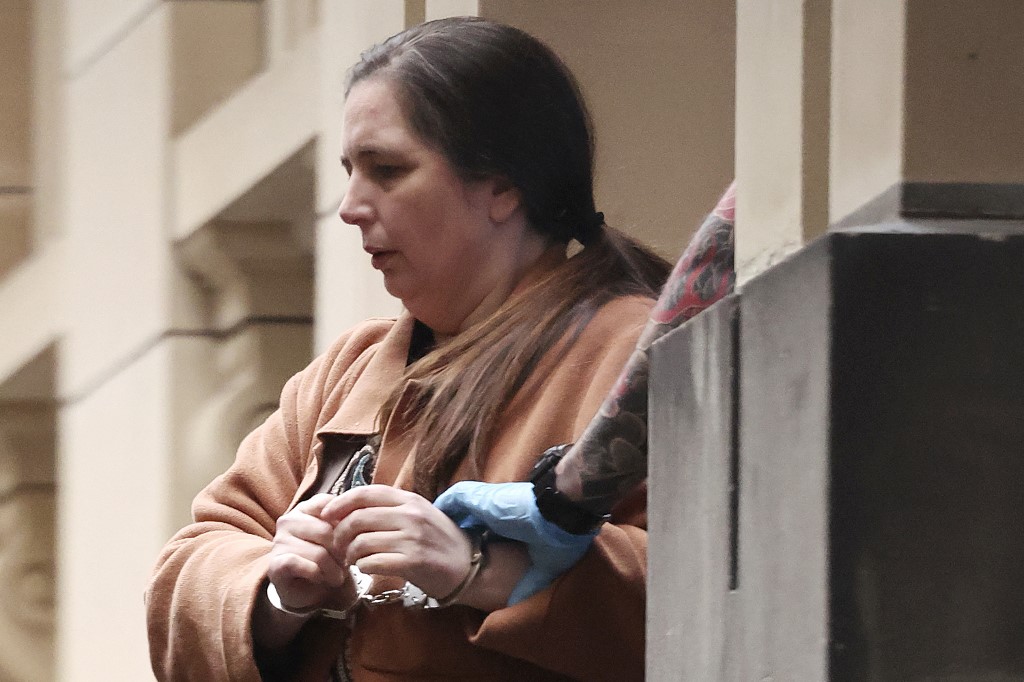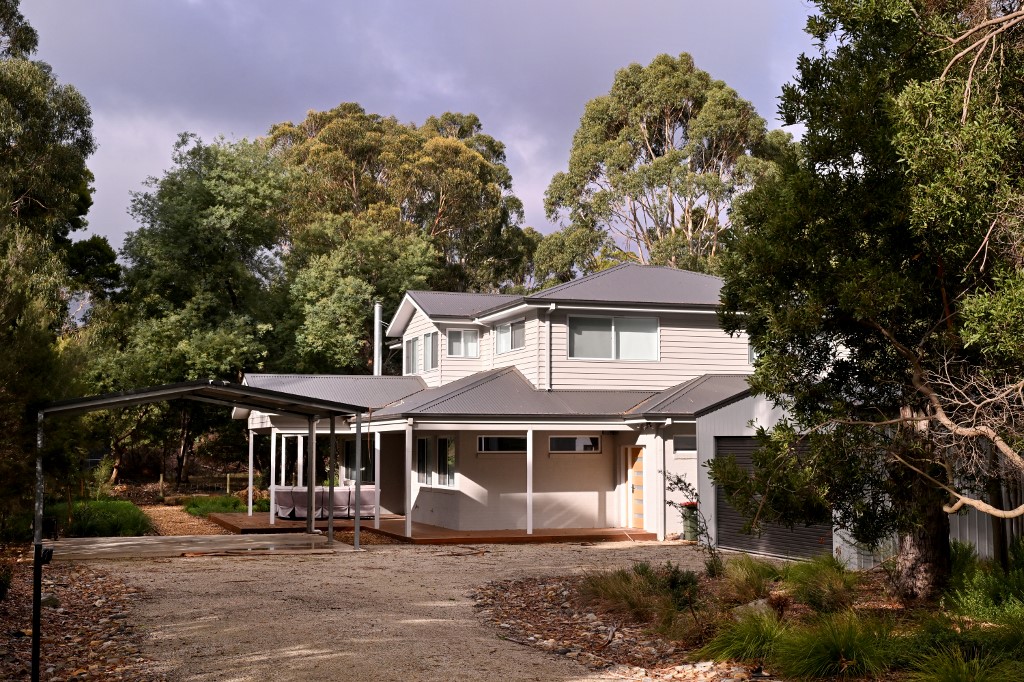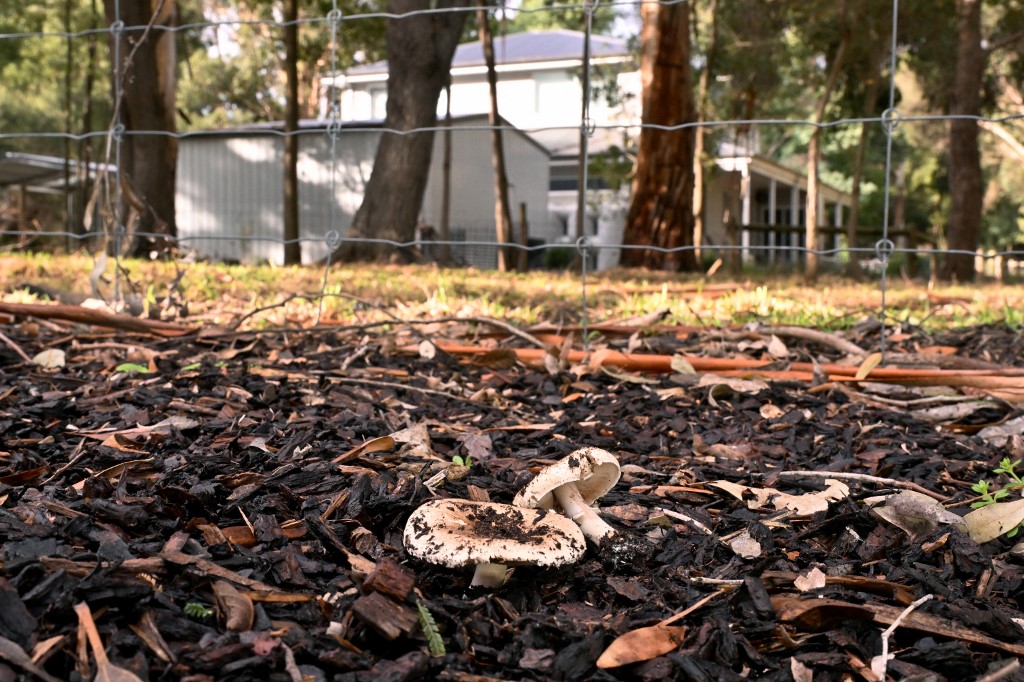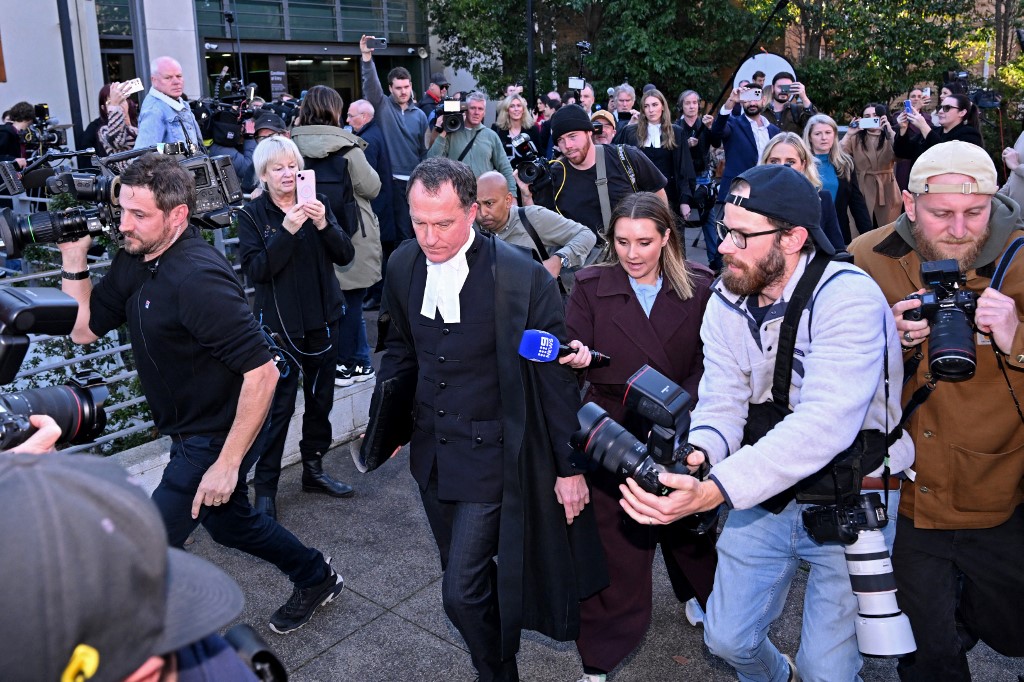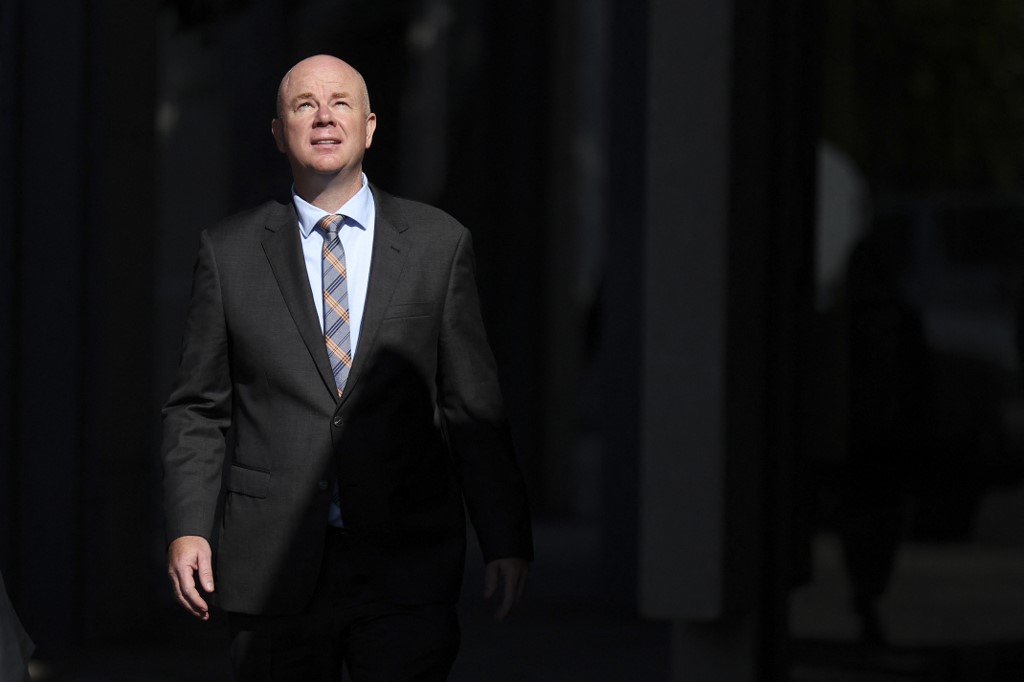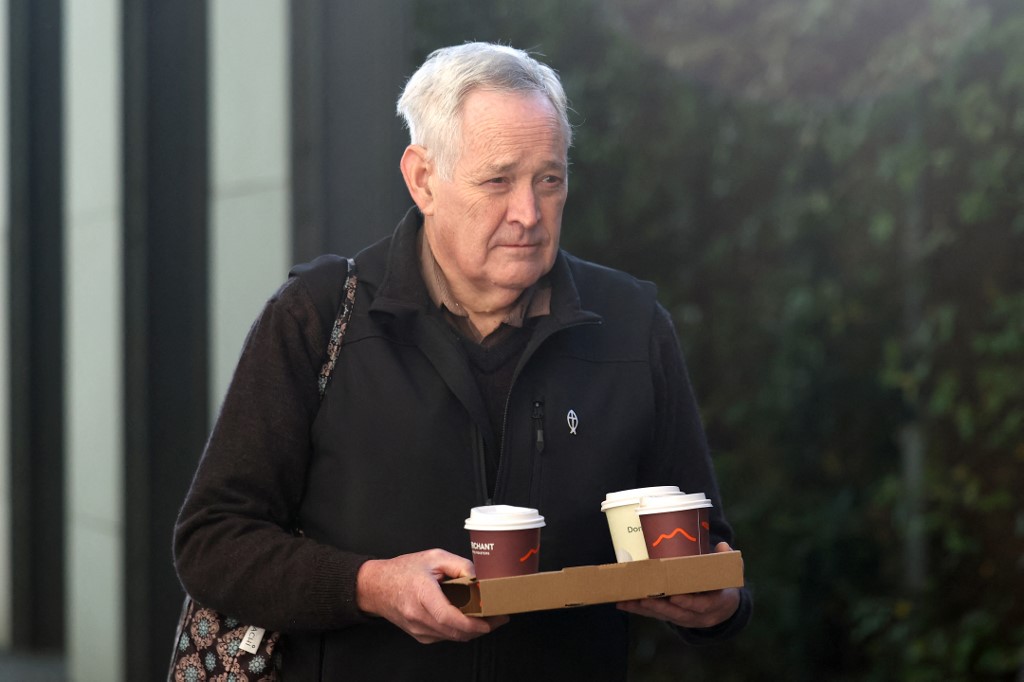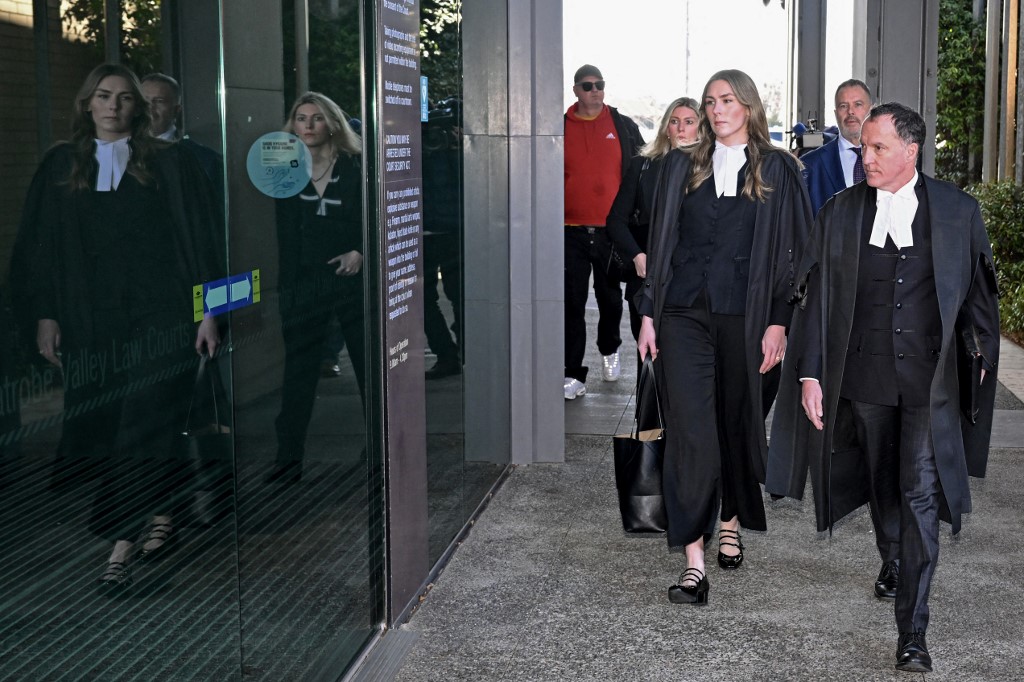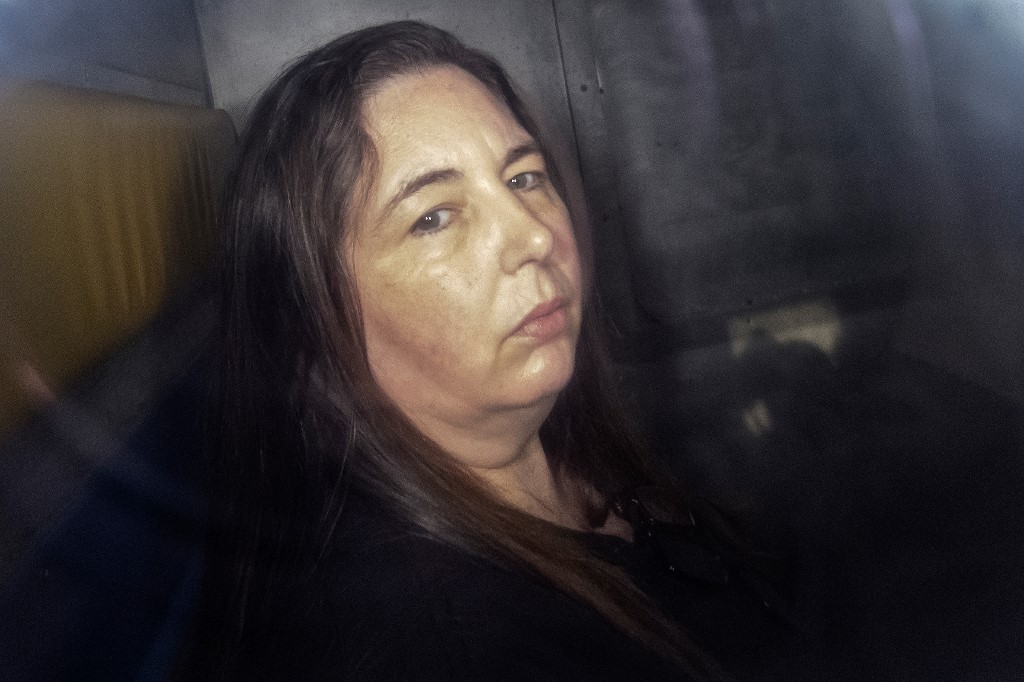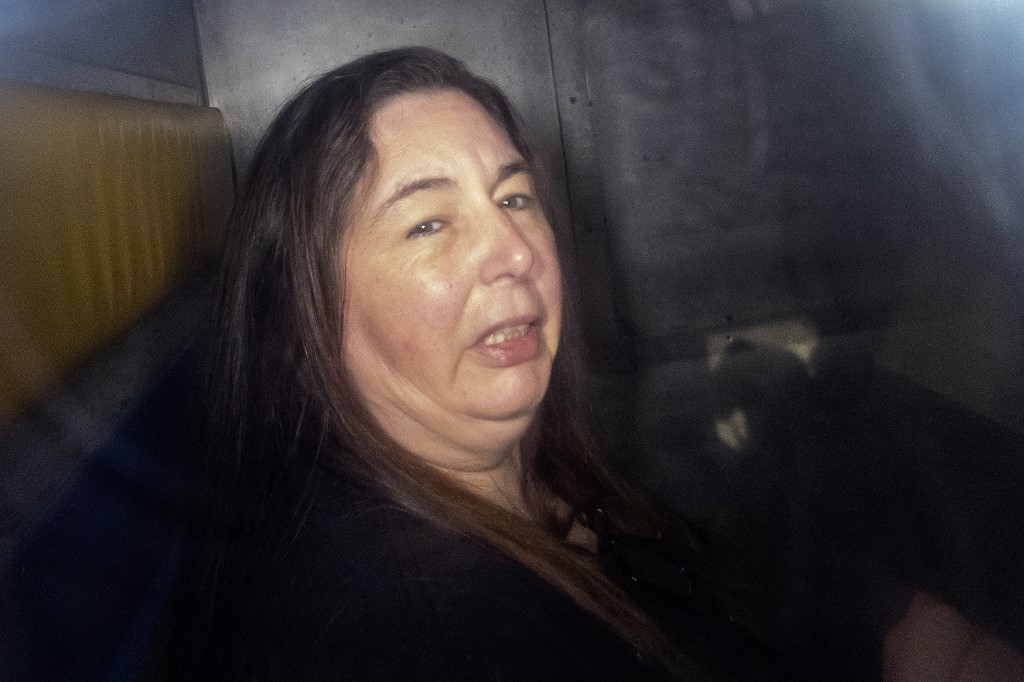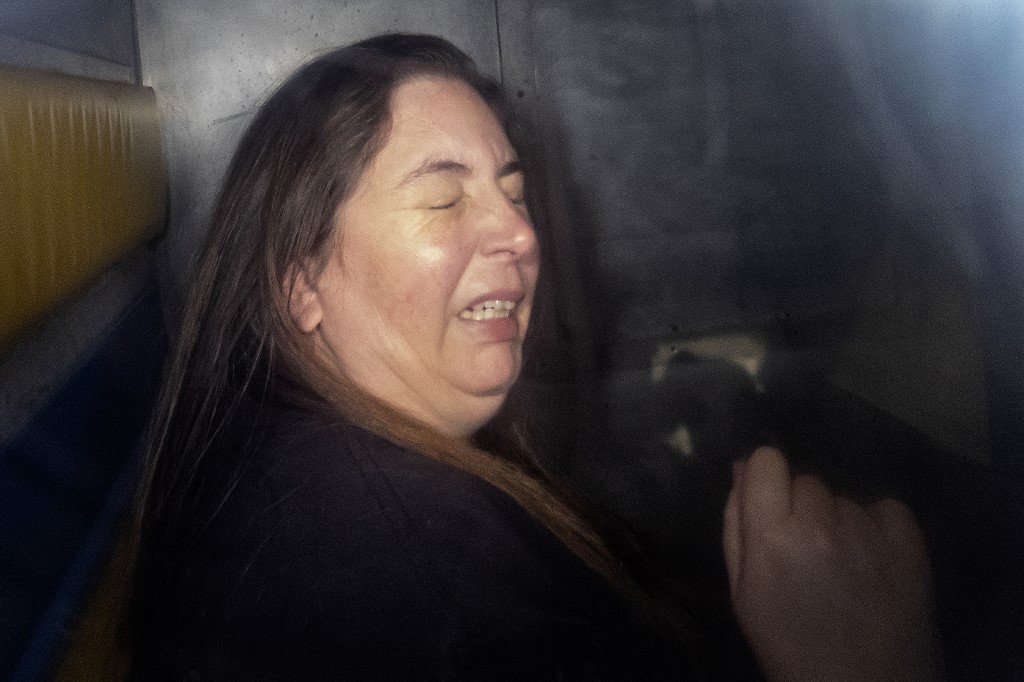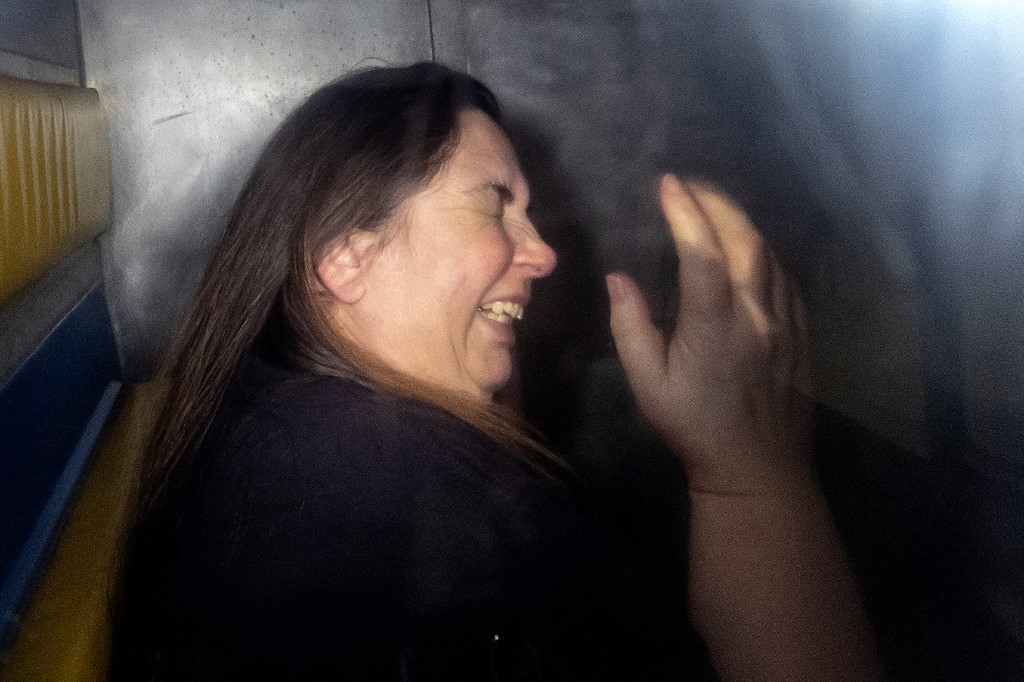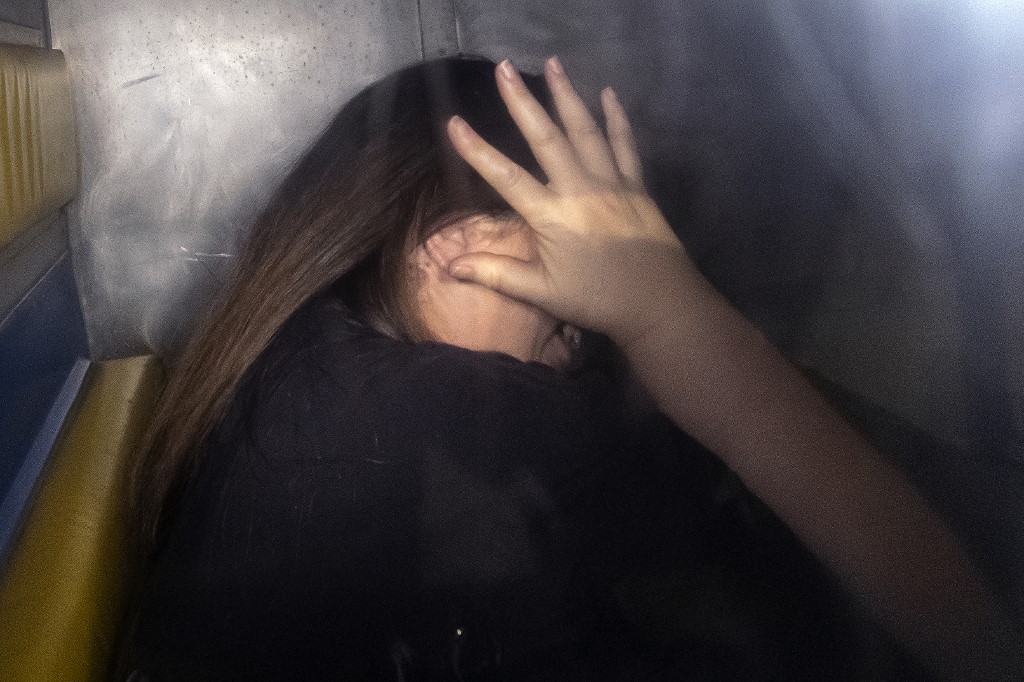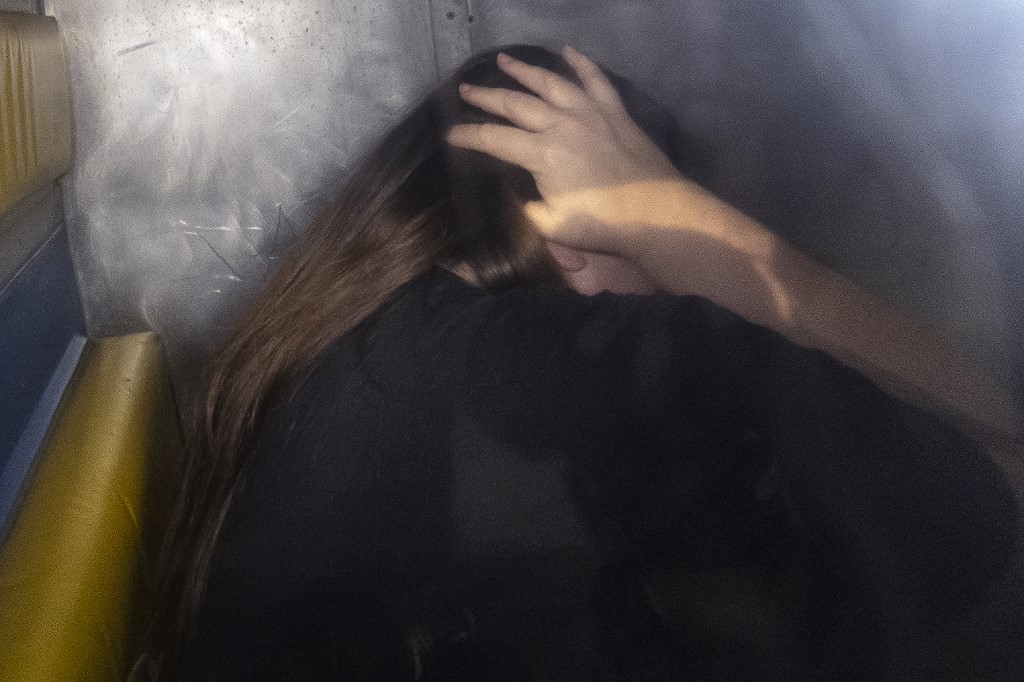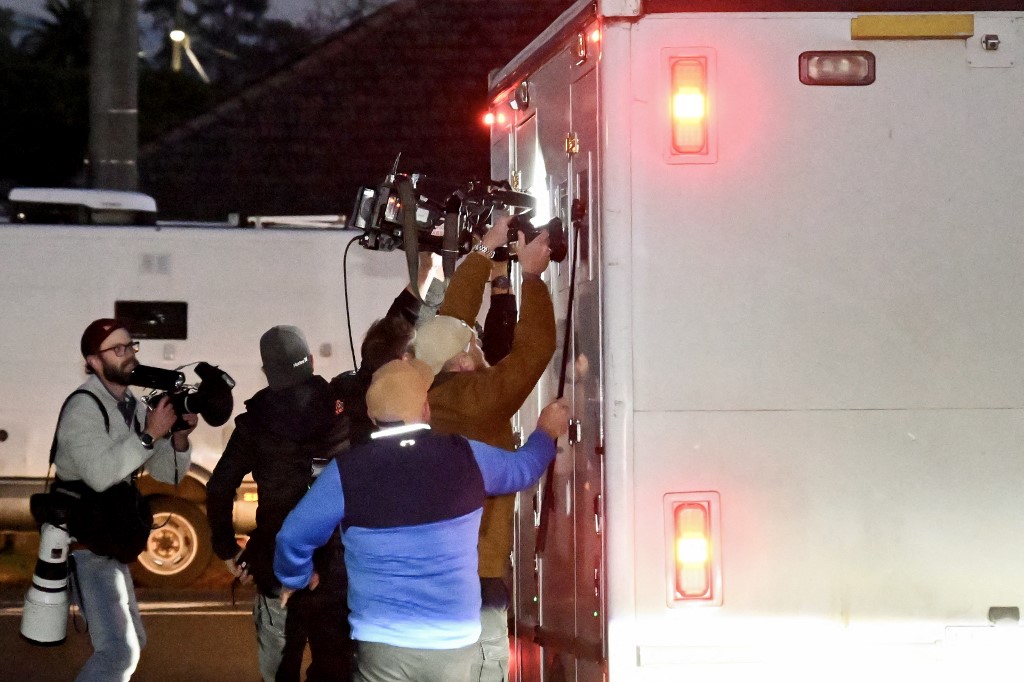The meal
For AFP’s Australia bureau, the mushroom murders underscored why having a permanent presence Down Under matters. With global interest soaring, it was essential to have boots on the ground -- delivering text, photo and video with accuracy and speed. Over two years, we deployed a large team to cover this story.
It began as a mystery: how did lethal fungi mushrooms end up in a beef Wellington? And was it all an accident, like Patterson claimed? A story like this does not unfold quickly, so AFP’s team worked hard to stay across key developments. This included the day when Patterson was arrested.
After a highly publicized trial, dubbed "the trial of the century" in Australia, Erin Patterson is found guilty of fatally poisoning three members of her in-laws. In October 2025, she announces her intention to appeal.
A Death Cap mushroom at the Royal Botanic Gradens in Melbourne, on March 31, 2021. © William West / AFP
Convicted murderer Erin Patterson is escorted out of the Supreme Court of Victoria in Melbourne on August 25, 2025. © Martin Keep / AFP
Bureau
For AFP’s Australia bureau, the mushroom murders underscored why having a permanent presence Down Under matters. With global interest soaring, it was essential to have boots on the ground -- delivering text, photo and video with accuracy and speed. Over two years, we deployed a large team to cover this story.
It began as a mystery: how did lethal fungi mushrooms end up in a beef Wellington? And was it all an accident, as Patterson claimed? A story like this does not unfold quickly, so AFP’s team worked hard to keep across key developments. This included the day when Patterson was arrested.
General view of the home of Erin Patterson in Leongatja on May 20, 2025. © William West / AFP
Mushrooms growing outside the home of Erin patterson in Leongatha on May 20, 2025. © Wiliam West / AFP
The trial
The trial was held in the small sedate town of Morwell, about 2 hours from Melbourne in the state of Victoria, better-known for prize-winning roses. The town became the centre of a media frenzy for 11 weeks, attracting reporters, photographers, VJs, authors, podcasters, and TV producers. After careful planning, AFP deployed two photographers and one VJ for the first day of the trial to capture the chaos. In the following weeks, the team would regularly drive from Melbourne to Morwell. The greatest challenge was capturing Patterson -- who had so far avoided the cameras. But AFP photographer Martin Keep managed the impossible task.
There were limited seats available for media, with most journalists sitting in a spare overflow room where the trial was projected. The court also took the rare step of providing an audio link for journalists to listen to proceedings. Recording was prohibited, so reporters needed to take notes as quickly and accurately as they could for six hours a day, with 50 witnesses -- also filing stories. On top of that, there were strict legal restrictions about what we could report to ensure Patterson was given a fair trial and to protect the identity of some people. So we needed to ensure everything we published adhered to these rules.
AFP also prepared a deep dive into the story that we published after the verdict was delivered. We deployed reporter (Laura Chung) and photographer (William West) to Morwell and Leongatha in the final weeks of the trial to get an understanding of the community at the centre of the case. They visited Patterson’s large home where the fateful lunch occurred, the small oak tree-lined road where she collected death cap mushrooms, the church her victims attended and the graves of the lunch guests. They also went to the courtroom, where Patterson’s fate was being decided by a jury of 12 people. The courtroom was filled with family and journalists on the day, so during a brief morning team break, Laura slipped into the room to see Patterson. The home chef stared at Laura for the time she was in the room – something Patterson was known to do to journalists.
We used the images, videos and text from this trip to inform an in-depth look at the story behind the trial, alongside a timeline and a story on the verdict.
Lead barrister Colin Mandy is surrounded by members of the media as he leaves the Latrobe Valley Magistrates' Court in Morwell on July 7, 2025. © William West / AFP
Simon Patterson, the husband, leaves Latrobe Valley Magistrates' Court in Morwell on May 2, 2025. © Martin Keep / AFP
Ian Wilkinson, a Baptist pastor who recovered after a lengthy stay in hospital, was a dinner guest of Erin Patterson in Morwell on June 30, 2025. © Martin Keep / AFP
Long text coverage
Can you introduce yourself briefly?
Laura Chung, AFP correspondent for Australia, 10 years reporting experience but joined AFP in 2024.
How do you cover a long story like this one?
This story captured the attention of Australia (and the world) from the moment it broke in July 2023. People couldn’t believe how gruesome, sad, and morbid this story was. I was not at AFP when the story first broke, but my colleagues were. From the outset, they worked hard to update the story with new developments and ensure this complex story was told accurately. By the time the trial neared, I had joined AFP and helped our bureau plan the coverage. We needed to coordinate photographers, a VJ and text reporters, ensuring that everyone knew what to do and when. Constant communication between teams proved essential. While courtroom trials can seem exciting and fast-paced on TV, in reality, they’re much more boring in real life. Days are filled with legal arguments, long testimonies, silence, and a lot of waiting.
Is there something that particularly struck you on this coverage?
What struck me was how well the AFP team worked together. Covering such a complex and long trial can be difficult, but having a strong and supportive team can make all the difference.
Lead barrister Colin Mandy (R) arrives with (L-R) Lawyer Ophelia Holloway, Barrister Sophie Stafford and Lawyer Bill Doogue at the Latrobe Valley Magistrates' Court in Morwell on July 7, 2025. © William West / AFP
While courtroom trials can seem exciting and fast-paced on TV, in reality, they’re much more boring in real life.
The photos
Can you introduce yourself briefly?
Martin Keep, Melbourne-based (via the UK) freelance photographer, covering news and sport, working with AFP since 2022.
How did you realize the series of Erin Patterson pictures in the truck during trial?
As much as this trial had captured the imagination of the world, from a photographer’s point of view, it offered very little for us to work with. We had the same people coming in and out of the same court building day in, day out. In the early stages, the story was about how the world’s media had travelled far and wide to cover this bizarre case and this was to be my assignment – two days of the trial’s first week, shooting colour of media crews assembled outside. The second of those two days happened to be a Friday; a day when the accused would be transported back to Melbourne at the end of proceedings. Due to the geography of this trial, the accused, who was being held on remand at the Dame Phyllis Frost Centre in Melbourne, was transported down to Morwell on a Monday morning and then held in a cell in the next-door police station, before being transported back to Melbourne on a Friday afternoon.
Friday afternoon came around and a small group of photographers waited at the entrance gate to the police station, hoping for a glimpse of Erin Patterson as she was loaded into the prison transport vehicle. Alas, the vehicle arrived, drove through the gate and into a garage with a roller door, where Patterson was loaded with the roller door closed. No sign of her. Our only hope was to throw a camera up to the truck window as it left and hope for the best. Much to my amazement, I reviewed the frames I’d gotten and there she was! The only downside was the picture was shot at iso 50,000, was incredibly grainy and dark and barely in focus. The woman we were after had looked straight into my lens and the picture was barely usable.
What were the challenges?
This presented quite the challenge; how do you get a picture through a tiny, blacked out window, that’s about 7’ high, on a moving truck? These windows aren’t designed with the prying eyes of the world’s media in mind. I thought long and hard about whether or not I’d missed the best, or only, opportunity to get a picture. It ate away at me for about 10 days, while I developed a plan of attack. There had to be a way to get more light into the window.
I devised a DIY camera rig, with two powerful flash units that would sit right above the front element of my 16-35mm lens, with a big rubber lens hood attached; the thinking being that I could throw enough light to penetrate the dark glass but the large hood would cut out the reflection of the flash coming back into the lens. The only slight snag was that my assignment on the trial was over, we weren’t planning any further coverage until later in the trial. I needed this picture. This first failure was starting to bother me, so I informed the Sydney Bureau that I was going to go to Morwell at the next opportunity and get her again. It felt personal.
The next opportunity just so happened to be what was actually a rest day for the jury. Court wouldn’t sit that day, but both the prosecution and defence legal teams would be there, which meant that Patterson would also be there. I arrived in town to find that none of the usual media crews were present. No other photographers, no news crews and no documentary makers – they'd all decided to make the most of the rest day and get some much-needed rest themselves. It was just me and my DIY rig.
Three hours passed before the truck arrived but, when it pulled up to the gate, it was go time. The gate opening mechanism meant that the truck had to sit at the entrance for about 30 seconds, giving me just about enough time to work my way around the windows of the four individual cells, with no knowledge of which one she could possibly be in. When the truck finally made it through the gate, it was time to review the images on the camera and, to my relief, there she was. The rig had worked perfectly and I had the figure at the centre of one of the biggest news stories in the world staring back at me. Seven frames, in all; a sequence that begins with her looking straight at me and ends with her hiding away behind her hands. It was less than half a second in time but I had what I’d travelled for. I immediately phoned the Sydney Bureau and informed them of what I had and then it was just a case of waiting to see which way the verdict would fall. Over the following eight weeks of the trial, many determined photographers tried to get her through that same window but none got close. As the11 week trial wrapped up on July 7th, we had the exclusive pictures of the triple murderer.
Erin Patterson (1st to 6th photos) arriving in the back of a prison transport vehicle at Latrobe Valley Magistrate's Court in Morwell, on may 12, 2025. © Martin Keep / AFP
Members of the media (7th photo) follow a police vehicle transporting Erin Patterson as it leaves the Latrobe Valley Magistrates' Court in Morwell on July 7, 2025. Martin Keep AFP photographer is on left side with his DIY camera rig with two powerful flash units. © William West / AFP
I needed this picture.
Explore our coverage. Get an AFP News free trial.

